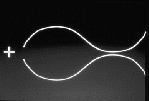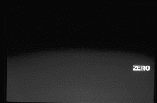< Page 7 of 15 >
1 2 3 4 5 6 7 8 9 10 11 12 13 14 15
Anti-Reflection
Coating
Technical Aspects
|
Returning to the light wave, the same principle applies. Add the �plus� waves together and the height of the new wave doubles. That is constructive interference. But reverse one of the waves or make a negative image of it, and then add the plus wave and the minus wave. The result is zero. That is destructive interference. Now consider the lens and how this application works to help. Light waves enter an uncoated lens at obtuse angles causing reflections on both sides of the lenses. After the AR coating has been applied only direct light is allowed to pass through the lens. This occurs because the thickness of the coating is measured precisely in wave length thickness. To be more precise, it is one quarter of a wavelength. This means that the waves travels one quarter of its own length from the front surface of the coating to the front surface of the lens. Then it travels another quarter of its own length to leave the surface after being reflected from the front surface of the lens. This is an important concept if we are to understand how an anti-reflective coating works. A light wave has now traveled one half of its own length, thereby reversing itself against the next one and the one before it. The waves create destructive interference and cancel each other. Since one coating layer is precisely matched to eliminate one wavelength, other wavelengths (or colors) are not eliminated completely. By adding additional layers of coatings to the surface, additional wavelengths can be eliminated. This becomes a complex formula best completed by computer. Each manufacturer has a formula which is proprietary and felt to be their edge in this competitive market. When measured on a spectrophotometer, each of these individually formulated coatings appear differently and become the AR coating �fingerprint� of that manufacturer. |
|
< Page 7 of 15 >
1 2 3 4 5 6 7 8 9 10 11 12 13 14 15




